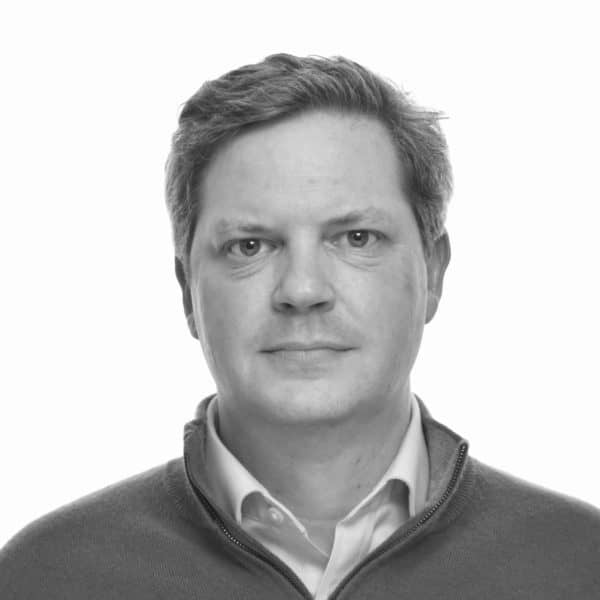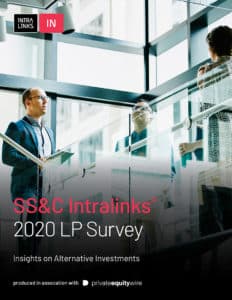As the SS&C Intralinks 2020 LP Survey, produced in association with Private Equity Wire, revealed, more than 50 percent of LPs said they would look to select managers of up to USD 500 million during 2019/2020.
Interestingly, whereas one-third of investors in the same survey published in 2018 said they would allocate to managers with an AUM of USD 1 billion or more, in last year’s survey that figure dropped to 28 percent; not substantial, but a sign that LPs are aware of the need to look beyond bulge bracket names.
Michiel Meeuwissen is co-head of alternative strategies at Kempen Capital Management, a leading Dutch asset manager. He says that GP selection criteria and size of manager differ, depending on the individual investment strategy.
Some strategies such as distressed debt, are more labor-intensive and need bigger organizations with lawyers, analysts, restructuring experts, etc. “I would say it is difficult to run a distressed debt strategy with less than USD 1 billion in AUM,” says Meeuwissen. “However, more traditional strategies such as equity long/short can be run with smaller teams and potentially needless complex infrastructure.
“The sweet spot for us lies between USD 500 million and USD 3 billion in AUM; slightly higher than the average number portrayed in this LP survey.”
Kempen’s hedge fund program is designed so that it will typically only look at managers with a minimum of USD 250 million in AUM, even for more vanilla strategies. This is to ensure the GP can spend enough operating capital on what Meeuwissen refers to as various “hygiene factors” such as compliance, risk management and governance.
“Also, we prefer to allocate to managers who are only running a single flagship fund, rather than those who might also be running multiple managed accounts for individual investors. If they are less than USD 500 million, we want the manager to be fully focused on running the flagship fund,” stresses Meeuwissen.
Kempen currently allocates to no more than a handful of managers at the lower end of USD 250 million, including one Asia-based equity long/short manager.
One hedge fund allocator particularly focused on what AIMA defines as “emerging managers” – i.e., those with less than USD 500 million in AUM – is Milltrust International LLP, an institutional allocator based in London and Singapore, which currently manages a range of specialist emerging market-focused fund products.
Alexander Kalis is managing partner and head of investments at Milltrust. He says that given the firm’s focus on emerging markets, USD 500 million in AUM represents the upper end of GP size in its multi-manager portfolio. This is understandable since the region is still home to a higher percentage of small management groups, relative to the U.S. and Europe, which are more mature markets.
“Some of the managers we allocate to are very boutique and niche managers, although we do invest across a wide spectrum of strategies and AUM sizes. Some funds are part of wider larger asset management groups with billions of dollars under management,” says Kalis.
“We also negotiate quite hard on fees…. We aim to keep total expense ratios below 1 percent. So part of our GP selection criteria will be on the willingness of the manager to negotiate fees.” – Alexander Kalis, managing partner and head of investments at Milltrust
Whereas Kempen prefers to allocate directly to flagship funds, Milltrust takes a different approach, using managed accounts.
Milltrust thinks about its GP selection by identifying country-specific fund managers: i.e., China- or Southeast Asia-focused managers, and actively rebalances the portfolio across emerging markets (including Latin America) using proprietary macro models.
“We ask managers to provide a specific sleeve of their investment strategy, for our multi-manager portfolio,” explains Kalis. “Previously, that was done on our UCITS platform, but over the past 12 months, we’ve been migrating towards restructuring our products onto a Cayman Islands platform. We felt UCITS was a bit too restrictive. We already have transparency on the underlying portfolios thanks to our managed account approach, so we felt we didn’t need an extra layer of oversight and expensive governance requirements that a UCITS framework typically imposes.”
One of the main drivers behind accessing emerging managers is the potential for higher returns, which was cited by 37 percent of LPs. Trying to source differentiated returns remains an important driver among hedge fund allocators, as it demonstrates where they are able to add value to the own end investors. This requires skill at identifying the best managers, as return dispersion typically widens the lower down the AUM scale one moves.
“The ability to have a meaningful short book and a long book of original names that can potentially create truly differentiated returns is an important consideration for us.” – Michiel Meeuwissen, co-head of alternative strategies at Kempen Capital Management
Meeuwissen states that Kempen seeks to avoid large equity long/short managers who might be holding the biggest technology names in their portfolios – that is, FAANG stocks (Facebook, Apple, Amazon, Netflix, Google).
“We’d rather focus on sourcing the type of returns that our investor base is not exposed to in their traditional portfolios.
“A smaller manager has greater flexibility in terms of the investment universe it can invest in, picking original names that you won’t often find being held by larger managers. Also, they have the ability to hold more meaningful short positions – typically larger managers are more restricted because of liquidity terms on the short side of the book compared to smaller managers, in our experience. The ability to have a meaningful short book and a long book of original names that can potentially create truly differentiated returns is an important consideration for us,” outlines Meeuwissen.
Digging a little deeper into manager selection criteria, Kalis says that manager pedigree and track record are critical considerations; as cited as the two key factors among the survey’s LPs.
“We also negotiate quite hard on fees,” says Kalis. “We are positioning our emerging markets multi-manager fund on the same level as if it were a global emerging markets manager; we aren’t a fund-of-funds, in that respect. We refer to it as a multi-specialist fund. Each manager runs a sleeve of our fund, and as a result, we focus carefully on negotiating fees. We don’t charge double layers of fees. Investors pay a single fee, and we aim to keep total expense ratios below 1 percent. So part of our GP selection criteria will be on the willingness of the manager to negotiate fees.”
When the structure was set up in 2012 it was done so using a single custodial arrangement, to give Milltrust full transparency and control over the investment; the legal mandate lies with them, not the manager.
“Over time, this has helped us demonstrate how we’ve added value to investors. Since we’ve been running the strategy it has delivered three times the performance of the MSCI Emerging Markets Index. Some 30 percent of those returns have come from our country allocation decisions, using proprietary macro models to rebalance to different regions.”
Tilting the portfolio has enabled Milltrust to develop what Kalis calls a “double alpha” approach: alpha generated by stock picking from underlying managers and alpha from tilting the portfolio depending on where the market opportunities lie.
Should allocators continue to focus their attentions in 2020 on managers in the USD 100 to USD 500 million AUM range, then “those who have a solid IT infrastructure in place and technology solutions that add value to their business could benefit,” says Meghan McAlpine, director, strategy & product marketing, alternative investments at SS&C Intralinks.
Meeuwissen concludes by echoing this comment made by McAlpine: “As mentioned earlier, for us it is a hygiene factor, and fortunately there are a lot of emerging managers who do have good IT infrastructure.
“In addition, we don’t want managers to go beyond the capacity constraints of their investment strategy. It’s an important element of our initial and ongoing due diligence process. We think it is important for managers to only grow their AUM while they still believe they can generate outperformance.”





